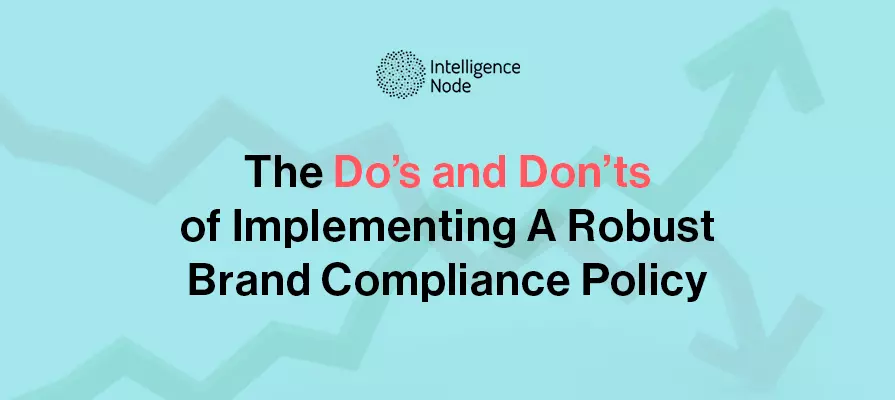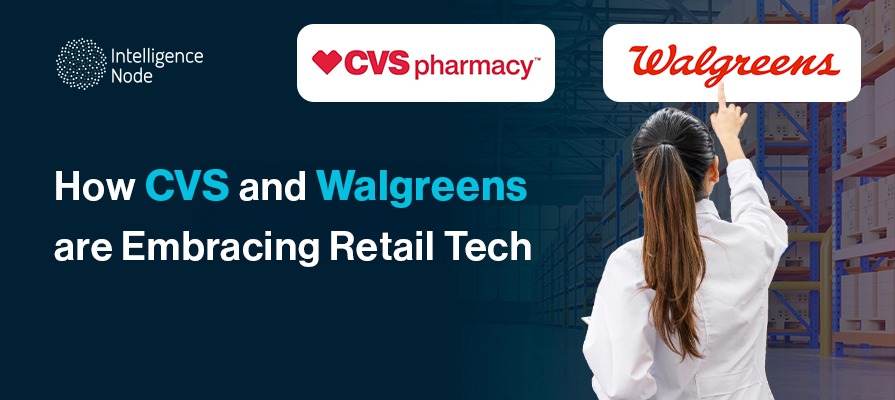Table of contents :
What is MAP Compliance Monitoring & Why Do I Need it?
How Can I Enforce A Robust MAP Pricing Policy & Reduce Violations?
How Do I Benefit From MAP Policy Enforcement?
Everyone of us who is well versed with online shopping has at least some time encountered or even purchased a fake or a counterfeit product. Counterfeit products and gray-goods sold through unauthorized supply chains, offer marked down prices and deep discounts and have become a new nightmare for today’s brands and manufacturers. Apart from eating into sales and margins, these products are also responsible for eroding brand value and consumer trust. And with the exponential growth in eCommerce, there has also been a rampant growth in counterfeiters and gray-market goods, adversely impacting both brands and consumers. Infact, sales from counterfeit and pirated goods total around $1.7 trillion every year — more than drugs and human trafficking.
Online marketplaces are fast expanding, constituting 46% of online US sales and a whopping 61% of global eCommerce sales as of 2019. With these marketplaces often acting as breeding grounds for counterfeiters, gray-market, and unauthorized sellers, sales of fake and counterfeit products have increased manifold, encroaching on the market share and margins of brands and authentic sellers. The more delay in taking action against these perpetrators, the bigger a menace it will be, as we are already witnessing today. But, thanks to technological advances in the retail arena and the availability of sophisticated MAP compliance software, there is a way out and it is time for brands and manufacturers to take matters into their own hands.
What is Minimum Advertised Price(MAP) Monitoring & Why Do I Need it?
Minimum Advertised Price is the price set by manufacturers or brands below which retailers and sellers are not permitted to sell. It is a way to ensure that products are not sold at deep discounts by certain sellers, thereby diminishing their brand value and causing loss of sales and an imbalance in the market for other sellers. MAP compliance monitoring is not limited to pricing alone and can be extended to brand imagery, description and advertising as well. By laying out a comprehensive map compliance policy, brands can specify guidelines on how to advertise their products while adhering to the brand identity.

But, in today’s complex retail environment having a robust MAP policy is just half the battle won. The second and the most important step in MAP compliance monitoring is enforcing your MAP policy consistently across all sales and supply channels and identifying and acting against violators on a daily basis. With products being sold across global marketplaces and third party sites, and through hundreds of retailers and resellers, the best bet for brands and manufacturers is to find an automated AI-driven MAP compliance monitoring solution that can act as your eyes and ears around the clock and alert you of any inconsistencies and violations in real-time.
MAP policy non-compliance has strict penalties and by identifying violators, brands and manufacturers can ensure they are penalized and are also banned from selling again. In doing so, brands and manufacturers are not only safeguarded from future losses caused by such illegal activities, but also ensure that consumers are not getting duped and that their trust in the brand is restored.
How Can I Enforce A Robust MAP Compliance Monitoring & Reduce Violations?
1. Create a Comprehensive MAP Compliance Policy Unique to Your Brand
Every manufacturer or brand has unique requirements, goals, and market value and their MAP policies need to reflect these. Copy pasting MAP policy templates available online might not always work for your brand and might leave behind loopholes that come back to haunt you in a matter of time. Identify all the key aspects of your brand that need to be covered in the policy and draft a policy that aligns with your advertising needs. State detailed guidelines that retailers and resellers need to comply with while advertising your product and encourage them to do so by offering cooperative advertising funds wherever possible.
2. Implement MAP Compliance Consistently Across Channels
Consistency while enforcing your MAP compliance monitoring policy is of utmost importance. Your retailers and sellers may be of all sizes and may use different channels to sell your products. Make sure they are informed about your MAP policy and alert them whenever you update any terms. Let retailers know the benefits of being compliant to your policy both from the point of making healthy margins and selling the best-quality goods with high brand value. Ensure you enforce your policy across channels as any discrepancy in enforcement will lose you credibility amongst your retailers.
3. Monitor Your MAP Policy & Penalize the Violators
The success of your MAP policy ultimately depends on how well you can enforce it. From widespread enforcement across the globe to constant monitoring to identify and eliminate violators, your MAP policy needs to cover all ground at all times. Though this requirement sounds nearly impossible to carry out, automating your MAP compliance monitoring by implementing smart, intuitive MAP monitoring solutions is your answer, as it will not just save you thousands of dollars in map violations but also restore brand value and reclaim brand and price control.
4. Improve your Direct to Customer (DTC) Selling Model
Apart from a robust MAP policy, improving your DTC channels is a great way to tighten your supply chain and encourage customers to buy directly from your official site. In a recent Forrester survey, Dyson stood out as the brand with the tightest supply chain in place and closed distribution network to ensure strong e-governance. It works aggressively to encourage its customers to directly purchase from its eCommerce website and limit the instances of third-party selling which is often unreliable. In the same report, Forrester also states that as customers actually prefer buying directly from the official site, by investing in this model and ensuring effective DTC implementation and innovation, brands can have more than half of their revenue coming from this channel, with a majority of it being online. Many brands like KitchenAid, Nespresso, Mac, and others have already made great strides on this front.
5. Invest in Automated MAP Monitoring Solutions
Drafting an on-point MAP policy is one thing but deploying it successfully across channels is a completely different ball game. To track MAP compliance violations across hundreds of retailers and multiple websites and marketplaces needs constant vigilance and around the clock monitoring. As this type of implementation is not humanly possible, invest in automated, AI-driven MAP compliance monitoring software that can be your eyes and ears across the global retail marketplace and identify and alert you of violations and non-compliance at all times.
6. Educate Customers on Counterfeits and Unauthorized Sellers
Apart from enforcing a robust MAP policy, it is important that brands educate customers about counterfeit and fake products and ways to identify these. Websites should have content addressing this parallel economy, how it hurts both brands and customers and information on what customers can do if they suspect buying counterfeit products from unauthorized sellers. Forrester found that 55% of US online adults say it’s important for a retailer’s website to offer professional ratings and reviews. This puts the onus on brands and manufacturers to encourage and incentivize their customers to leave reviews on the websites they buy from to ensure consumers have access to the right information before making a purchase.
How Do I Benefit From MAP Policy Enforcement?
It is an established fact that controlling counterfeiters costs much less than removing fake goods from the market. In fact it can take as much as $200 million to retract counterfeit goods for a single brand. With so much at stake, a MAP enforcement policy is your best bet in controlling counterfeiters and unauthorized sellers, retaining your brand integrity and product margins and providing an elevated customer experience to your shoppers.
- Identify high-risk sellers and products across the globe
- Prevent counterfeit goods from cannibalizing your market share significantly
- Reduce operational and seller compliance costs by almost half
- Grow & control a robust sales network by converting unregistered sellers into legitimized sellers
- Boost brand equity, margins, and overall revenue
- Reinstate customer trust and loyalty
If you found this useful and you’d like to learn and monitor thousands of products through hundreds of retailers on multiple platforms and marketplaces online, we invite you to download our free “Reclaim Your Brand: A Guide to AI-driven MAP Monitoring eBook“.




